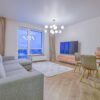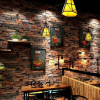
Basic principles of interior design
What are the principles of interior design?
Interior Designing is an Art and everyone wants to have their personal space designed with the best of designs that would enhance the beauty of the house. In today’s fast-moving world, every interior designer would like to bring advanced technology in their designs and apprehend a concept to the space. Interior designers follow some principles of interior design while planning a design for a particular area. Every household wants their house to have specific patterns and designs with some nostalgic memories that would remain with them forever.
Necessitate for principles:
There are a few key principles that enhance the design of the space. All these principles help designers to build flawless designs for their clients. They practice the knowledge by incorporating it practically and eventually in all commercial and residential spaces. A cohesive space is what we get out of following the principles of interior design. These principles also help in designing a custom space for the people’s love for designing. Here are the most important seven principles that Spacey Interiors are following
- Balance
- Unity
- Rhythm
- Scale and Proportion
- Contrast
- Detailing
- Emphasis
Balance:
This is one of the most important principles that have to be remembered. It plays a crucial role in designing interior spaces. This principle helps to decide and place the objects across the space equally in a materialistic manner. There is a visual balance that is necessary for the design. There are three types of balances that need to be considered.
- Symmetrical Balance
- Asymmetrical Balance
- Radial Balance
Symmetrical balance:
Placing a single big object at the center with smaller other objects around it is symmetrical balance. This design illustrates an enchanting effect in the interior design space.
Asymmetrical balance:
This is arranging dissimilar objects in a disillusioned manner. This is called asymmetrical balance. The only similarity is the weights of the objects need to be in balance across the space. It gives a casual stylish look to the room.
Radial balance:
As the name goes arranging smaller objects around a single large object. It provides a radial dimension to the entire design space. A central focal point is always present while designing this pattern. Visualization of all the objects is how balance is created in a design space.
Unity:
Disparate styles in a home or a commercial space are how people visually look at the space. Linking all the varied styles under one roof is an ardent new entity in designing a new interior designed area. Bringing a variety of colors in all the areas and a relevant texture to the space is also part of unity.
Rhythm:
The rhythmic pattern is what is dominant in designing an interior space. Placing repetitive elements in space or showing repetition in some way or the other like colors, designs, textures, or patterns. Sometimes the same kind of crockery or furniture with the same material in various areas of the house. Under rhythm, there are three types to have a detailed look.
Repetition:
As mentioned earlier, featuring the items in a random fashion is how repetition reaches us. But one must be careful about this repetition.
Progress:
The name shows up the usage of designing items randomly. Increasing from a smaller to a large number is how one needs to progress, candle stands, and some exclusive designs.
Transitions:
Eyes help people to explain the various outputs to the design space. The doors and the windows have a great view moving from place to place reaching every design space of energy.
Scale and proportion:
Proportion is the size of objects and the equivalent other designs to it. Both of them need to be in a particular ratio. Scale is what needs to be decided while designing the area in a particular window. An oversized object in a small-scale room looks awkward. The ratio of the lower section is always larger than that of the larger section. The visual sense is what applies to this principle.
Contrast:
Contrast means opposite combination. Any place looks enduring and enchanting making diligent interiors for all the required effects. Black and White is the major contracts combo. The kitchen interiors are where the contrasting choice goes in first. Sometimes the living space is also on the contrast border. Empty spaces in an area are where the contrast patterns are applied.
Detailing:
Every aspect of the designing space is regarding the detailing of the space. Small and intricate finishes provide extensive clarity in all the objects and extra designs. Some subtle and mind-blowing designs occur across the room. It provides a personal touch to the area. Interior designers make sure that even a small unassuming part of the room is designed with the most elegant artifact.
Emphasis:
It is about giving a high-level significance to a particular spot or area in an interior design space. Emphasis is one of the highest principles under the principles of interior design. The focal point of a particular object such as texture or furniture, or making a specific area in the vast designing space. The texture is one of the major components where emphasis can be handled efficiently. There are a few categories of emphasis, here we go,
Emphasis through design elements:
Design Elements is where contrast is created and gives a heavy visual impact. Bold interiors with ardent furniture are the one that enhances the emphasis in a residential space.
Emphasis through placement:
An artifact is used to create emphasis in every aspect of the design. It is a strategic displacement in designing elements in a room.
Interior designing as a science in our lives:
Interior designing is a science in that every principle is inculcated with fine ideas and innovations. All the principles of interior design help a creative interior designer to put in his soul and heart and produce extraordinary designs for his client. Spacey Interiors, one of the most well-known designers in South Tamil Nadu has been using the principles with utmost faith and has impressed numerous clients with their unique designs. They have brought in traditionalism through their modern designs. They have been bringing boundless memories for their clients to endure and enjoy.





0 comments